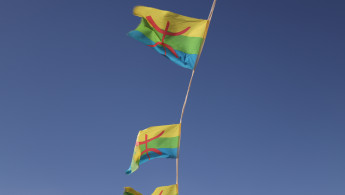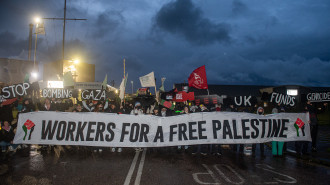Tamazight on Google Translate: Amazigh celebrate 'life-giving' leap despite concerns on 'inaccurate' AI model
From the Atlas of Morocco to the sunny sands of Libya, the Imazighen (Amazigh people), and the indigenous communities of North Africa, have jubilantly welcomed Tamazight's integration into Google Translate, despite concerns over the accuracy of the AI-based model.
"It would be an understatement to say that this a life-giving move for an indigenous language like Tamazight," Brahim El Guabli, an Amazigh scholar and associate professor at Williams College, told The New Arab.
"Tamazight went from being threatened in its very existence to being written and now to being one of the languages that Google is adding to its translation service online. All of this tells the story of Imazighen's resilience," he added.
On 27 June, Google announced its largest linguistic expansion ever, adding over 110 new languages to Google Translate, thanks to AI.
From Tamazight to Q'eqchi', these new additions represent more than 614 million speakers, unlocking the power of translation for around 8% of the world's population.
Among these, some are major world languages spoken by millions, while others belong to small communities of indigenous population, with a few on the brink of extinction but bolstered by passionate revitalisation efforts.
About a quarter of the new languages hail from Africa, marking Google's largest expansion of the continent's rich linguistic diversity, including languages like Swati and Wolof.
Why does Tamazight in Google mean so much?
For years, speaking and writing Tamazight was not merely an act of communication but a gesture of defiance, a political stand against the Arabisation policies that swept North Africa post-independence.
In the wake of their newfound sovereignty, the Maghreb states, entangled in the remnants of Francophone influence, viewed linguistic diversity as a threat, a hindrance in their quest to forge "unified and modern" nations.
"These Arabisation policies, which targeted French discursively, were in fact designed to Arabise Amazigh speakers as a pathway toward an imagined modernity," El Guabli, Co-founder of the Tamazgha Studies Journal, explained.
Over the years, the leaders in Morocco, Algeria, Tunisia, and Libya "actively deprived" Tamazight of the resources needed to flourish and evolve with the times, until the Amazigh Cultural Movement of the 1960s began championing linguistic and cultural rights.
It wasn't until 2011 that Morocco officially recognised Tamazight alongside Arabic. Five years later, Algeria followed suit. Meanwhile, Amazigh activists in Tunisia and Libya continue their fight for official recognition.
Today, only about 20 to 25 million people speak Tamazight languages across North Africa.
"Google has made Tamazight more tangible for the Amazigh diaspora and younger generations who had lost their connection to the language, removing many of the obstacles faced by learners of Indigenous languages that lack sufficient resources," added Professor El Guabli in his interview with TNA.
For instance, AI-powered services in government, banking, or insurance could cater to Tamazight-speaking populations, ensuring they receive the same quality of service as those fluent in French or Arabic - a service that continues to be unavailable in most North African administrations.
"This can profoundly impact [Amazigh people] lives, promoting inclusivity and equal access to essential services," added the Amazigh scholar.
Is AI doing justice to indigenous communities' languages?
When Amazigh users tested Google’s new translation option, many were dismayed by its inaccuracies and 'Arabised' translations.
"Regarding Google Translate, I found errors that should not be overlooked. It gives you Arabised Amazigh words. I hope the responsible team will launch a correction campaign," remarked a Facebook user in one of the few groups dedicated to preserving the Indigenous language.
Several others echoed the criticism, arguing that AI-based translation might not be the best way to preserve and promote their language globally.
In the age of AI, opinions are divided—some are utterly obsessed with the new tools, while others see them as the source of all evil.
TNA spoke to Moroccan AI developer El Mahdi Marhou, who broke down the challenges and promises of the new translation feature.
"One of the primary challenges is the lack of extensive linguistic resources for minority languages. Unlike English, Spanish, or French, which have been extensively studied and documented, Tamazight lacks large datasets and comprehensive linguistic libraries," explained Marhou.
Moreover, the myriad regional variants of Tamazight add complexity to developing accurate translation models. Tachelhite in southern Morocco, Rifian in Morocco's Rif, and Kabyle in the Kabyle region are just a few of the many dialects spoken in the region.
Encoding Tamazight poses another struggle, given its unique Tifinagh script and distinctive phonetics.
"AI's learning capability offers a solution. As users interact with the translation tool and provide feedback, the system can quickly improve," Marhou argued. "Leveraging local AI expertise and community involvement can help address the specific challenges of encoding and translating Tamazight accurately."





 Follow the Middle East's top stories in English at The New Arab on Google News
Follow the Middle East's top stories in English at The New Arab on Google News


